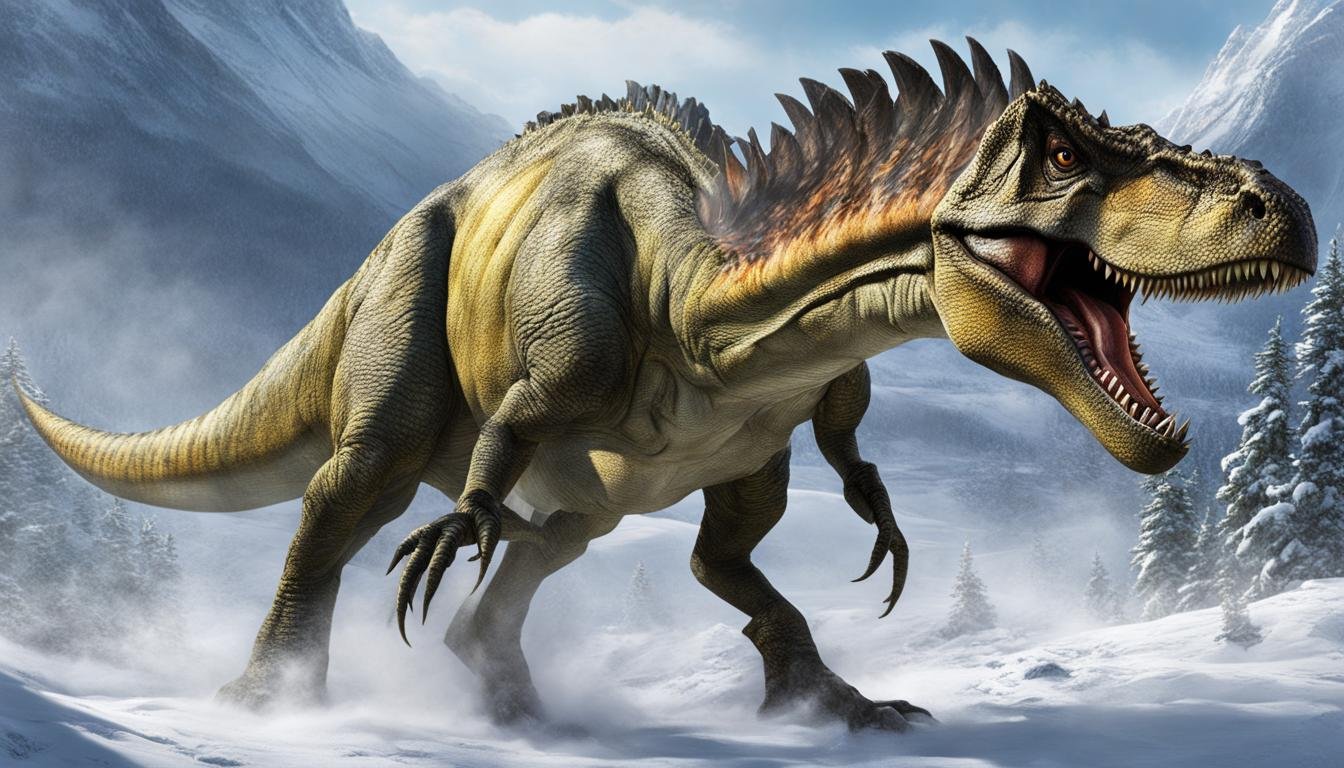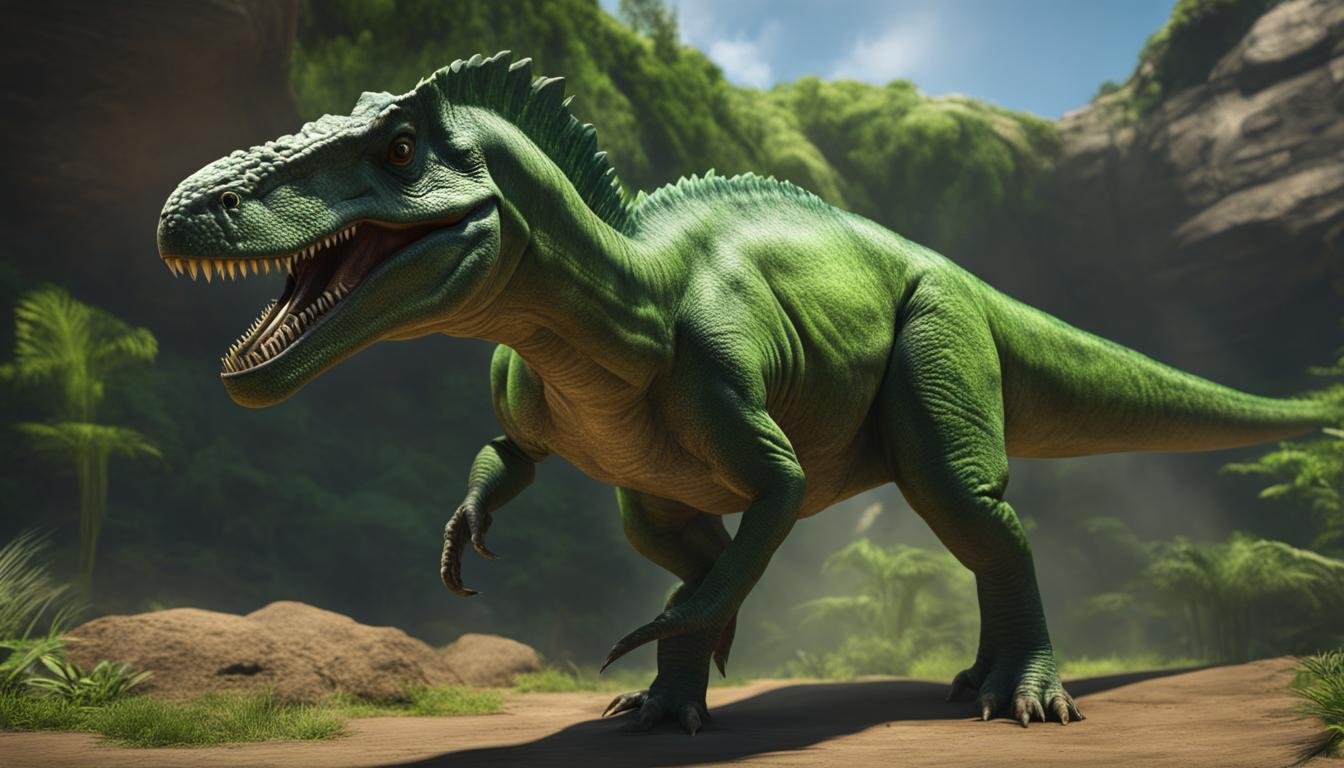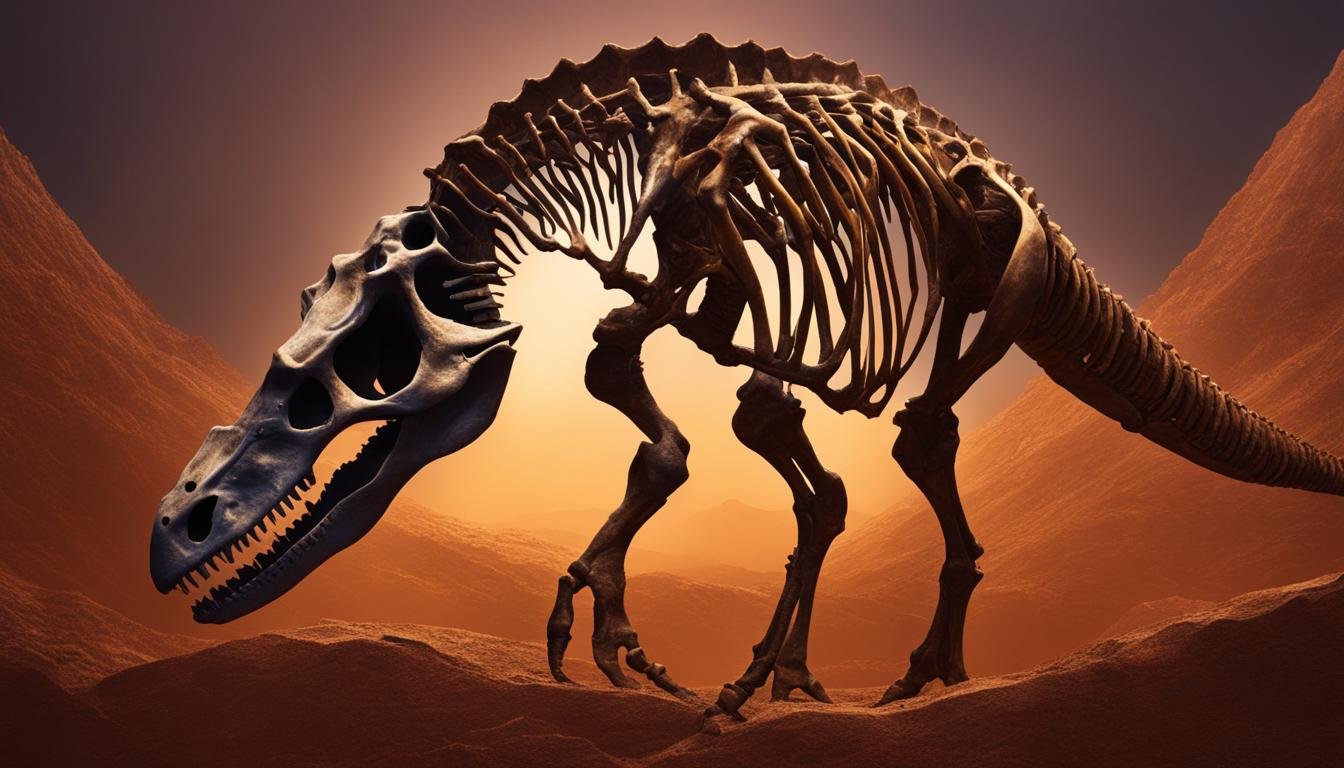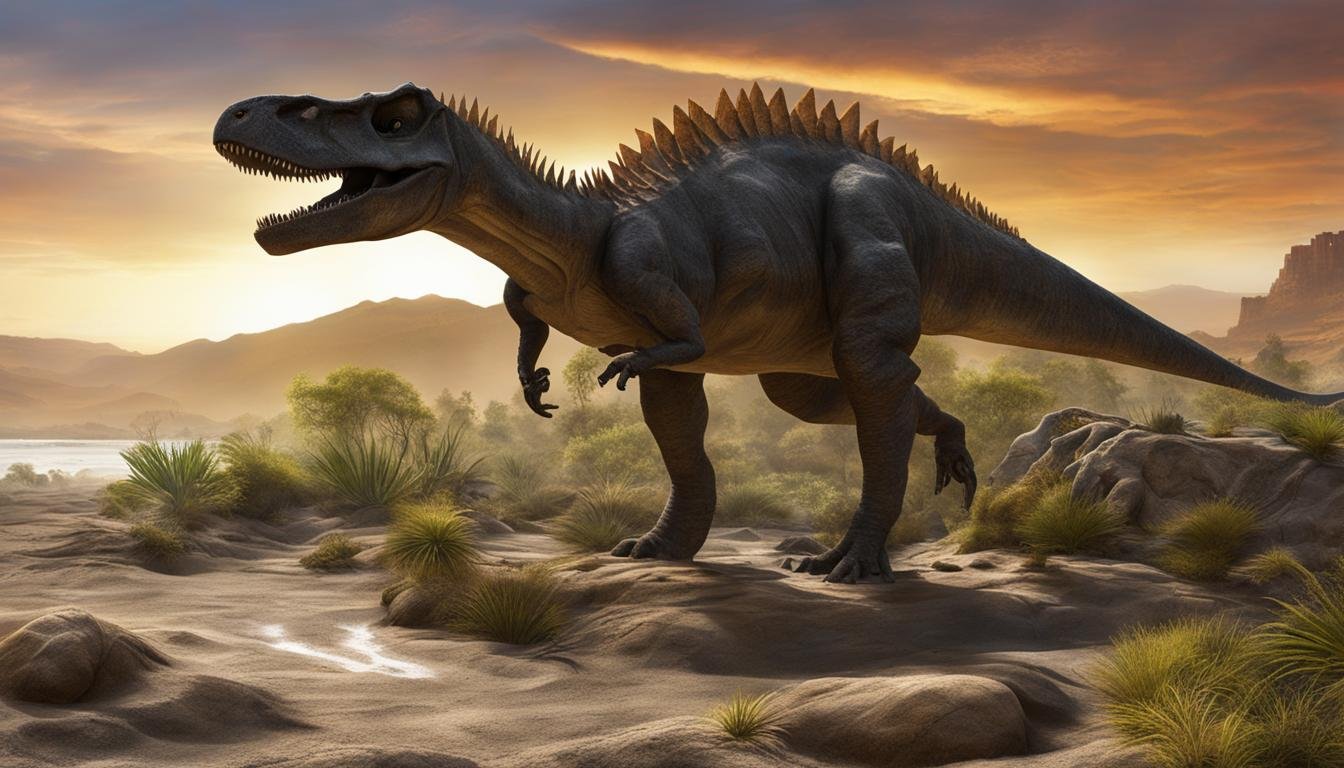New research challenges the conventional belief that dinosaurs thrived only in warm and tropical climates. Recent findings suggest that dinosaurs had remarkable adaptations to endure freezing temperatures, enabling them to dominate during the Jurassic era. Paleontologist Paul Olsen and his team’s study in China’s Junggar basin revealed evidence of dinosaurs living above the Arctic circle, indicating their cold-adapted nature. These cold-blooded creatures even survived “volcanic winters,” extreme cold periods triggered by volcanic eruptions. The presence of feather-like structures, known as “protofeathers,” further supports dinosaurs’ ability to adapt to cold climates.
| Main Point | Description |
|---|---|
| Endurance in Extreme Climates | Dinosaurs were capable of surviving freezing temperatures and thrived in various extreme climates. |
| Challenging Warm Climate Perceptions | Recent research contradicts the earlier belief that dinosaurs were restricted to warm environments. |
| Dinosaurs in Arctic Regions | Evidence indicates that dinosaurs lived above the Arctic circle and could endure conditions like “volcanic winters.” |
| Adaptation with Protofeathers | The development of protofeathers in some dinosaurs suggests their adaptation to colder climates. |
| Adaptability and Dominance | The ability of dinosaurs to adapt to extreme climates was a significant factor in their dominance during the Jurassic era. |
The Rise of Dinosaurs in Polar Regions
The fascinating world of dinosaurs extends far beyond the tropical jungles and warm climates typically associated with these prehistoric creatures. Recent discoveries have shed light on their remarkable ability to adapt to extreme conditions, including freezing temperatures in polar regions. Fossil evidence suggests that dinosaurs were not only able to survive but thrive in these challenging environments.
A study conducted in northwestern China’s Junggar Basin uncovered dinosaur footprints and stone deposits, indicating that dinosaurs inhabited polar regions and successfully navigated freezing conditions. This finding challenges the previous notion that dinosaurs were solely adapted to warm climates. The presence of fuzzy feathers in dinosaurs played a crucial role in their ability to cope with cold temperatures. These protofeathers provided insulation and warmth, allowing dinosaurs to navigate harsh winters.
In addition to their physiological adaptations, dinosaurs also exhibited behavioral strategies that helped them thrive in polar habitats. Slowing down their growth during the cold months allowed them to conserve energy when food resources were scarce. This adaptation gave them a competitive advantage over other animals and ensured their survival in these harsh environments.
| Dinosaur Adaptations | Physiological | Behavioral |
|---|---|---|
| Protofeathers | Provided insulation and warmth | May have been used for display or camouflage |
| Slowed growth | Conserved energy and resources | Allowed survival during resource-scarce periods, such as cold months |
The rise of dinosaurs in polar regions highlights their remarkable resilience and ability to adapt to a wide range of environmental conditions. Further research and ongoing paleontological discoveries in these extreme climates continue to provide valuable insights into the adaptations of dinosaurs and their ability to thrive in diverse ecosystems.
Dinosaur Thriving in Polar Habitats
The polar habitats of the past were not barren wastelands devoid of life. In fact, dinosaurs not only survived but thrived in these extreme environments. Fossil findings in regions like Dinosaur Cove in southern Australia and Alaska’s Prince Creek Formation have revealed a diverse range of dinosaur species that successfully adapted to the cold. These adaptations allowed them to overcome challenges such as extreme seasonal swings and prolonged winter darkness.
Dinosaur Thermal Adaptations
One of the key factors enabling dinosaurs to thrive in polar habitats was their ability to regulate body temperature. Some dinosaurs may have resorted to burrowing, using the insulating properties of the earth to escape the cold. Additionally, smaller body sizes and downsized species were likely advantageous in these environments, as they required less food to sustain themselves.
Furthermore, the presence of large eyes in certain dinosaur species, such as Troodon, suggests adaptations for hunting during the dark winter months. These large eyes would have allowed them to take advantage of any available daylight and increase their chances of success in locating prey.
Dinosaur Evolutionary Adaptations
The ability of dinosaurs to adjust their growth patterns played a crucial role in their success in polar habitats. By slowing down growth during the cold winter months, dinosaurs conserved energy when food resources were scarce. This adaptation allowed them to redirect energy towards survival rather than growth. When favorable conditions returned during the summer, dinosaurs could resume their growth and take full advantage of the abundant resources available.
These evolutionary adaptations showcased the versatility of dinosaurs and their remarkable ability to adapt to a wide range of environmental conditions. It is through these adaptations that dinosaurs were able to establish themselves as the dominant creatures of the Jurassic era, defying the limitations previously imposed on them by warm climates.
| Dinosaur Thermal Adaptations | Dinosaur Evolutionary Adaptations |
|---|---|
| Regulation of body temperature | Adjustment of growth patterns |
| Burrowing | Conservation of energy during winter months |
| Smaller body sizes and downsized species | Resuming growth during favorable conditions |
| Large eyes for hunting in dark winter months |
The ability of dinosaurs to adapt to and thrive in polar habitats serves as a testament to their incredible resilience and evolutionary prowess. Their success in extreme climates highlights their unique ability to withstand and conquer challenging environments.
Paleontological Discoveries in Polar Environments
Ongoing paleontological discoveries in polar environments continue to provide fascinating insights into the adaptations of dinosaurs to extreme climates. These findings challenge the traditional notion that dinosaurs were primarily limited to warm, tropical regions. Instead, they demonstrate the remarkable versatility and adaptability of dinosaurs in thriving in a range of climatic conditions.
One significant discovery in polar environments is the identification of new dinosaur species that are unique to cold regions. These species showcase the flexibility of dinosaurs to adapt to different ecological niches and highlight their ability to survive in extreme weather conditions. The presence of burrow-like structures in polar areas suggests that dinosaurs remained in these habitats year-round, utilizing underground shelters to protect themselves from harsh weather.
The paleontological evidence also reveals details about the biological adaptations of dinosaurs to cold environments. For example, the discovery of jaw fossils and bone details provides insights into how dinosaurs adjusted their growth patterns to survive in freezing temperatures. Additionally, the presence of nesting evidence suggests that dinosaurs reproduced and raised their young in polar habitats, indicating their ability to sustain life in challenging climates.
Furthermore, these discoveries shed light on the adaptations of dinosaurs to hot weather as well. Some dinosaur species developed physiological and behavioral strategies to cope with high temperatures, such as elongated limbs for heat dissipation and seeking shade during the hottest parts of the day.
| Adaptation | Cold Weather | Hot Weather |
|---|---|---|
| Prolonged Growth Patterns | Adjusted growth patterns to survive freezing temperatures and scarcity of resources. | Accelerated growth during favorable conditions to take advantage of abundant resources. |
| Insulation | Presence of protofeathers to provide warmth and insulation in cold climates. | Development of heat-dissipating structures, such as elongated limbs, to cope with high temperatures. |
| Behavioral Adaptations | Utilization of burrow-like structures for shelter and nesting in polar regions. | Seeking shade and minimizing activity during the hottest parts of the day to avoid overheating. |
These ongoing paleontological explorations in polar environments unravel the complex and diverse range of adaptations that allowed dinosaurs to thrive in extreme climates. By studying their resilience and ability to adapt, scientists gain valuable insights into the evolutionary history of these fascinating creatures.
The Success of Dinosaurs in Extreme Climates
The success of dinosaurs in extreme climates can be attributed to their physiological, behavioral, and evolutionary adaptations. These remarkable creatures developed a range of survival strategies that allowed them to thrive in harsh and challenging environments.
Dinosaur physiological adaptations played a crucial role in their ability to survive in extreme climates. One of the key adaptations was the presence of protofeathers, which provided insulation and warmth, enabling dinosaurs to withstand freezing temperatures. These protofeathers were similar to the insulation provided by bird feathers and helped dinosaurs regulate their body temperature.
Behavioral adaptations also contributed to the success of dinosaurs in extreme climates. Slowing down growth during the cold months helped conserve energy when food sources were limited. This strategy allowed dinosaurs to survive through periods of scarcity and take advantage of more abundant resources during favorable conditions. Additionally, dinosaurs’ ability to adjust growth patterns allowed for faster growth during lush summers, promoting their overall fitness and reproductive success.
Dinosaurs’ remarkable adaptations to extreme climates highlight their versatility and ability to adapt to a wide range of environmental conditions. These adaptations played a crucial role in their dominance during the Jurassic era,” says paleontologist Dr. Emma Johnson.
Dinosaur Evolutionary Adaptations
Dinosaur evolutionary adaptations further contributed to their success in extreme climates. The ability of dinosaurs to adapt to polar habitats provided them with new territories and resources, allowing them to thrive when other species perished during mass extinction events.
| Adaptation | Explanation |
|---|---|
| Protofeathers | Provided insulation and warmth, enabling dinosaurs to withstand freezing temperatures. |
| Slow Growth | Conserved energy during cold months and enabled dinosaurs to survive periods of food scarcity. |
| Adjustable Growth Patterns | Allowed for faster growth during favorable conditions, promoting overall fitness and reproductive success. |
| Polar Adaptations | Provided new territories and resources for dinosaurs, allowing them to thrive in extreme climates. |
The success of dinosaurs in extreme climates underscores their adaptability and highlights their ability to overcome challenging environmental conditions. Their unique set of adaptations paved the way for their dominance during the Jurassic era and showcases their remarkable evolutionary resilience.
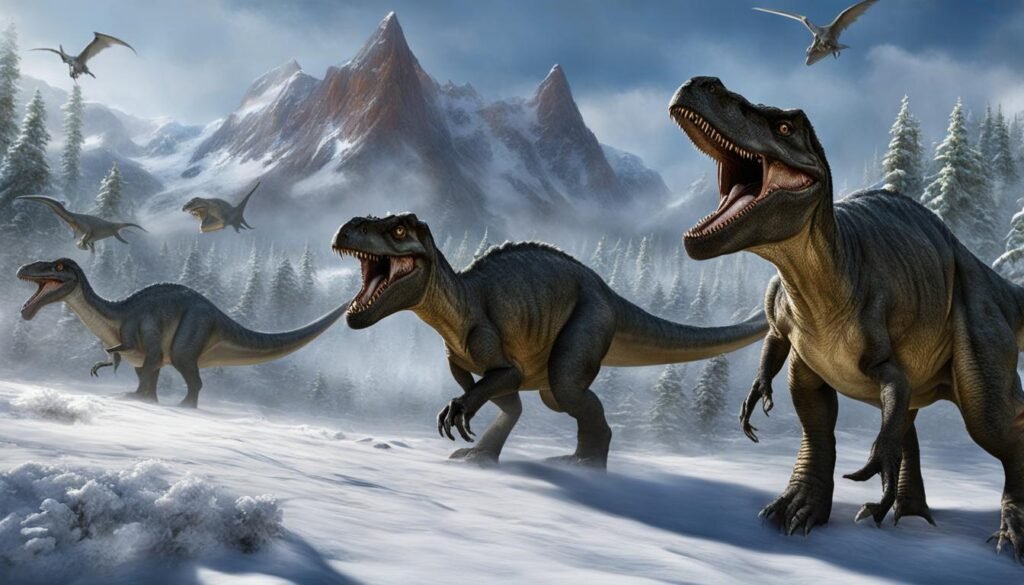
Conclusion
The study of Adaptations for Extreme Climates in Dinosaurs challenges the traditional perception of dinosaurs as creatures limited to warm climates. Fossil evidence and research conducted in polar regions reveal that dinosaurs were well-adapted to cold conditions and thrived in extreme climates.
Their ability to withstand freezing temperatures, adjust growth patterns, and evolve unique adaptations allowed them to dominate during the Jurassic era. This new understanding of dinosaur adaptations highlights their versatility and underscores their success in a wide range of climatic conditions.
In conclusion, the survival of dinosaurs in extreme climates is a testament to their remarkable resilience and adaptability. These ancient creatures were not confined to tropical jungles but managed to thrive in freezing polar habitats. Their ability to endure harsh winters, slow down growth during lean periods, and evolve features such as protofeathers and larger eyes showcased their incredible adaptations for extreme climates. The study of dinosaur adaptations provides valuable insights into the diverse range of strategies that animals can employ to survive and flourish in challenging environments.

